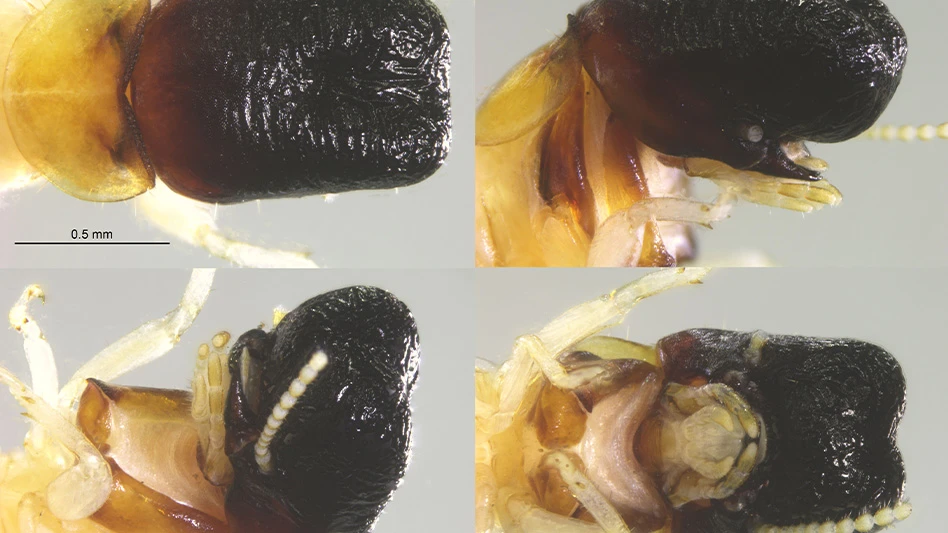
Are bed bugs vectors? Do they cause more harm than nuisance — and can they spread disease? A significant tie between bed bugs and trench fever was discovered and recently published in the journal PLOS Neglected Tropical Diseases.
Bacterium that causes trench fever is typically transmitted by lice feces. But following a laboratory study where bed bugs were fed three consecutive human blood meals inoculated with Bartonellaquintana bacterium, bed bug feces showed detectable bacterium three days post-infection and during the following 18 days of observation.
Further research showed that the bacterium survives in the “bed bug gut,” says Susan Jones, professor in the Department of Entomology at The Ohio State University. “The research is basically saying, we don’t really know all that much about bed bugs and their ability to harbor and potentially transmit pathogens,” Jones says. “The competency of bed bugs as a vector is unclear.”
Bed bugs are a costly and even painful nuisance to commercial and residential sites that face an infestation (and to the people within who are bitten). But there’s more to it. “Bed bugs are a pest of significant public health importance,” Jones emphasizes. “To call them simply a nuisance pest is to do a grave disservice to those suffering from bed bugs as these ectoparasites cause itchy bites in the majority of humans. Those who are extremely allergic to the bites can experience blood-filled blisters and long-term scarring.”
vector potential. We aren’t sure about bed bugs’ true role in transmitting disease, but this study helps us understand their potential as vectors. The research is a good reminder about how much we don’t know about bed bugs.
“The things we don’t know can come back to hurt us,” Jones says.
What we do know: Tropical bed bugs can harbor B. quintana (the causative agent of trench fever) as cases in Rwanda have indicated, Jones says.
A paper published in a 2013 edition of the American Journal of Tropical Medicine and Hygiene reported molecular identification of the trench fever bacterium in tropical bed bugs collected from a prison in Rwanda. The researchers detected the pathogen’s DNA in the bugs but they were unable to culture the bacteria. Unfortunately, no human blood samples were obtained when the bugs were collected so it’s not known if the bugs had fed on humans carrying the disease organism.
So, it makes sense that lab studies in common bed bugs — like this most recent study — show their competency of carrying the disease organism. But, because the research was conducted in a lab, we can’t be sure of bed bugs’ role as vectors in the natural environment. This leaves the question about bed bugs’ ability to spread disease unanswered, Jones says.
‘Mechanical’ Vectors. More researchers are focused on how bed bugs could act as “mechanical” vectors that can infect humans because of what they leave behind — feces. Bed bugs feed and defecate a lot. “If there is a disease organism alive in the feces and you scratch it into an open wound, then can you potentially get an infection?” Jones asks.
She adds we should dig more into the possibility of bed bugs as mechanical vectors because of their behavior, the impact they have on humans — leaving behind bites that prompt scratching and open wounds — and their defecation activity, which is frequent.
Jones hopes this prompts curiosity among pest management professionals and the research community. We need more information, she said.
The bottom line: We’re not sure about the biological role of bed bugs in natural conditions, outside of the lab. We know tropical bed bugs do spread bacteria, including the pathogen responsible for trench fever. So, be diligent about safety and public health protection while treating for bed bugs, Jones says. “I take great caution to prevent myself from getting bitten by bed bugs when I’m working with them.”
As we learn more about bed bugs’ vector potential, Jones suggests PMPs use best practices in the field when treating them. After controlling an infestation, clean up all evidence, preferably while wearing personal protection equipment such as gloves and a dust mask, she says. Vacuum shed skins. Ensure that all feces are removed. “Weeks after [infection of the bacteria in the lab], this organism was still found in the fecal material,” Jones reminds.
And PMPs should push for more research. Jones says, “It’s misleading to say that bed bugs are not vectors of disease. This has yet to be confirmed or ruled out.”

Explore the December 2015 Issue
Check out more from this issue and find your next story to read.
Latest from Pest Control Technology
- Donny Oswalt Shares What Makes Termites a 'Tricky' Pest
- Study Finds Fecal Tests Can Reveal Active Termite Infestations
- Peachtree Pest Control Partners with Local Nonprofits to Fight Food Insecurity
- Allergy Technologies, PHA Expand ATAHC Complete Program to Protect 8,500 Homes
- Housecall Pro Hosts '25 Winter Summit Featuring Mike Rowe
- Advanced Education
- Spotted Lanternflies, BMSBs Most Problematic Invasive Pests, Poll Finds
- Ecolab Acquires Guardian Pest Solutions





